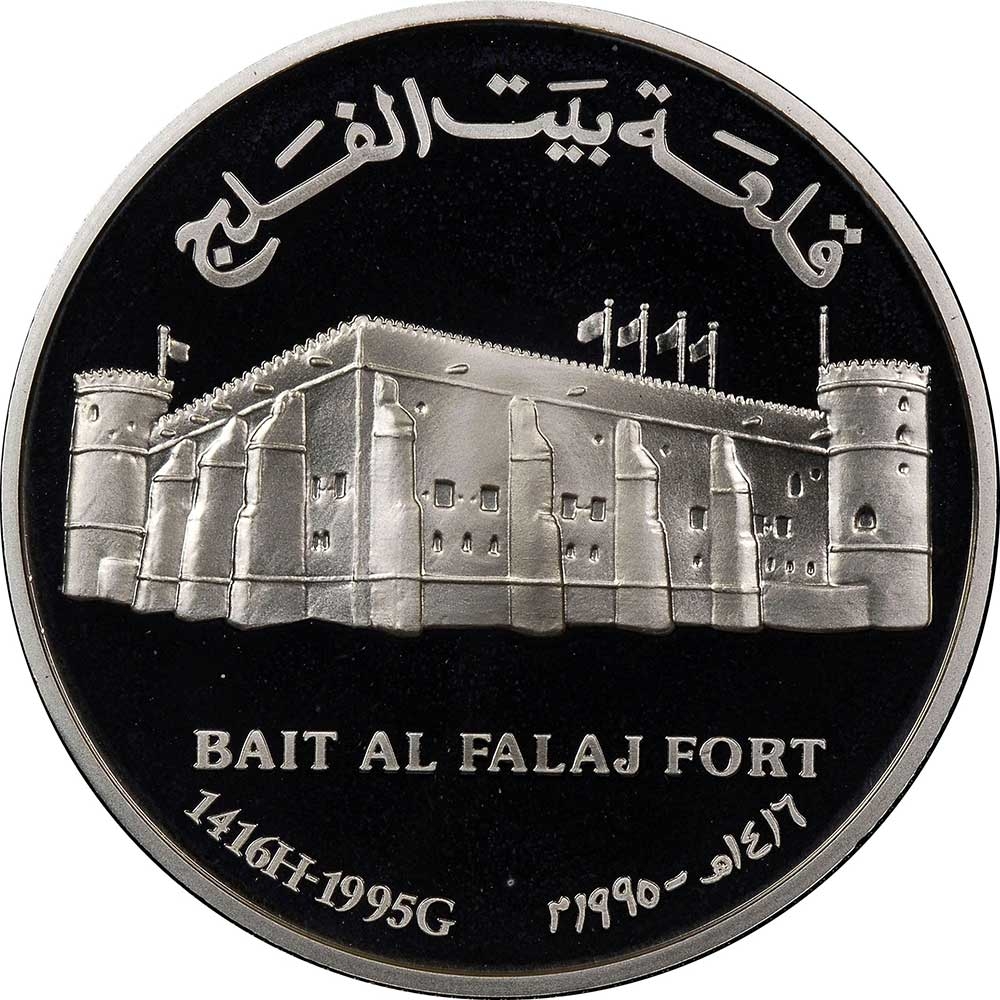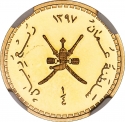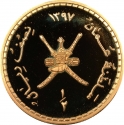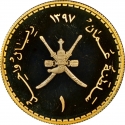You are about to finish your registration. Please check your mailbox (including spam folder). There should be a letter with a confirmation link. Check setting to make sure that your e-mail address is correct.
Send letter againDescription
Qaboos bin Said Al Said (1940–2020) was the Sultan of Oman from 23 July 1970 until his death. A fifteenth-generation descendant of the founder of the House of Al Said, he was the longest-serving leader in the Middle East and Arab world at the time of his death.
Obverse

|
Depicts the National Emblem of Oman dividing denomination in Arabic and English, surrounded by the country name inside a circle, with the legend "Central Bank of Oman" outside both in Arabic above and English below. البنك المركزي العماني |
|---|---|
Reverse

|
Depicts an outer view of Bait Al Falaj Fort, inscription in Arabic above and English below, date in Hijri and Georgian in Arabic and English below. قلعة بيت الفلج |
| Edge |
1 Rial
Omani Forts
Bait Al Falaj Fort
Subscribe series
KM# 119 Schön# 130
Omani Forts
Bait Al Falaj Fort







